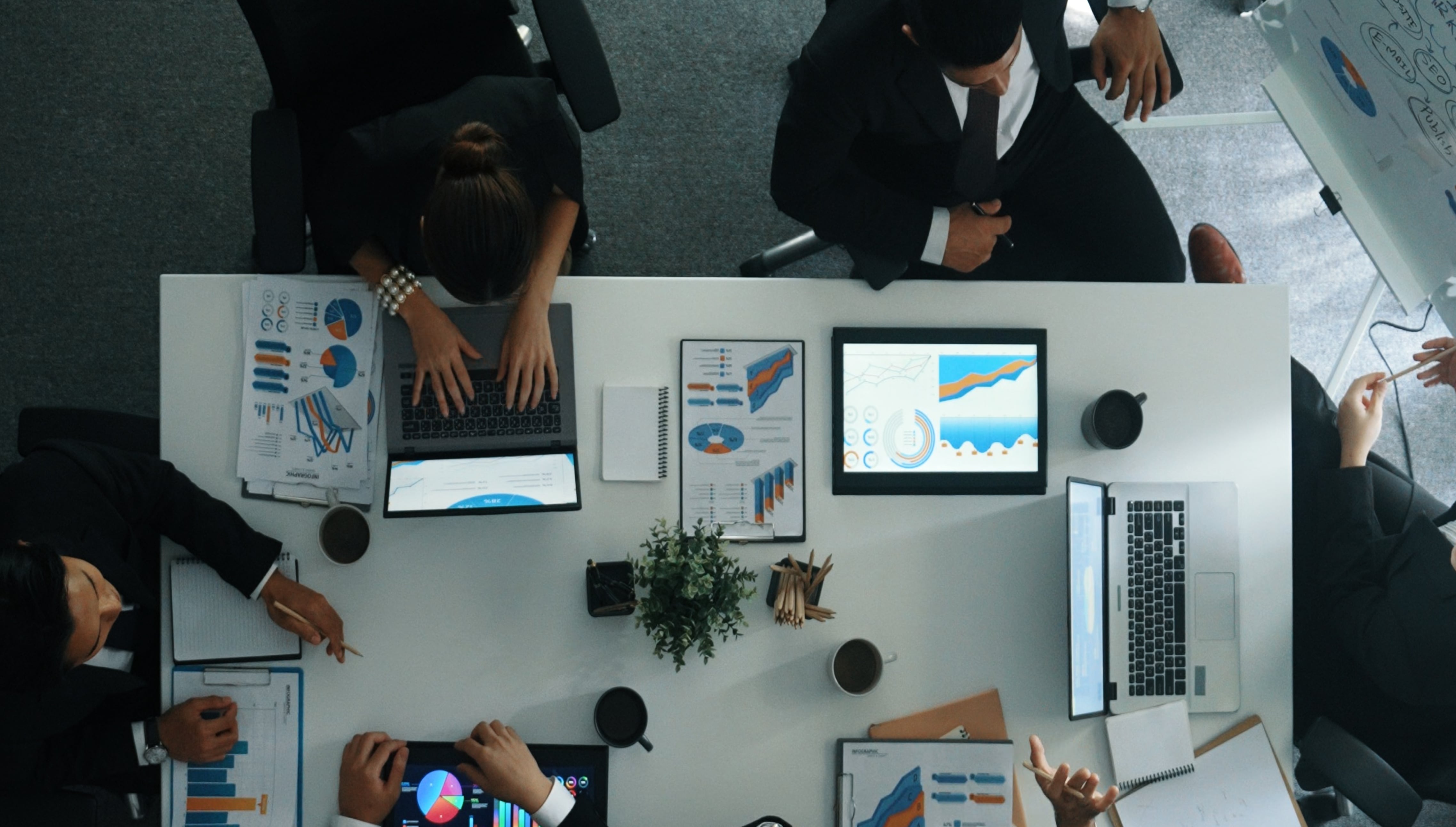
Responsible Choice Rebalance Commentary
Overview
The main focal point for financial markets over the last quarter has still been global trade. The panic which immediately followed April 2nd (“Liberation Day”) subsided once investors realised that the announcement of tariffs was simply the opening bell for negotiations to begin between the US and the rest of the world. Trump’s hardline tariff policy has softened since then – whether due to specific domestic pleas (automakers, Apple), appropriate concessions by trading partners (the UK and China), or due to internal legal challenges.
It’s still unclear how long-lasting any tariff policy will be; most US businesses (55%) are indicating that their initial response to tariffs will be to raise prices, rather than reshore. If inflation begins to tick up in the US, there may be more concessions to come. Equally, if prices stay low enough – and the low oil price is helping there – trade frictions could well resurface.
But it’s worth remembering that, despite the noise, all major markets, including the US S&P 500, are now showing green for the year. Pleasingly, we’ve seen strong performance from the UK and European markets, as sentiment is starting to shift away from the defining market dynamic of the last ten years – money pouring across the Atlantic to the US.
For the first time in a long time, the marginal investment dollar or euro or pound is looking beyond America. Japan is reforming into a more investor friendly destination. Europe’s industrial base is waking up. And Emerging Markets like India, Mexico and Brazil are continuing to deliver strong growth. Even the UK is getting a bit of love.
Economically, the global picture is nowhere near as bad as headlines would have you believe. Our economic models are suggesting that there’s at least as much to be happy about as sad. Consumer confidence isn’t high, but retail sales remain robust and manufacturers are seeing a steady increase in orders. And, if there is a period of sluggish growth, households and companies have some of the highest cash balances this century, and the lowest debt service costs.
There are some lingering concerns in the market about the weakness of the US dollar. We’re not too concerned. The US Dollar ain’t going anywhere. It’s the global currency of last resort. It might get a little weaker as investors look for opportunities elsewhere, but that doesn’t mean an imploding economy (remember in the mid-2000’s when the US was THE destination for cheap shopping?!). From an investment perspective, it’s simply one of many good reasons to be happy with a diversified portfolio.
7IM portfolios have done quite nicely so far this year – getting paid our income on our bond allocations, and having some significant non-US equity holdings which have benefitted from the rotation so far. We’re not seeing lots of glaring threats, nor any particularly juicy opportunities, which is just fine! We’ll stay patient, stay watchful and let markets work for us.
Core investment views
Whisper it, but we might be heading back to a more conventional world for economic cycles. As manufacturing restarts thanks to reshoring and defence spending, the established patterns of growth and demand should reassert themselves.
And in those patterns, the economic world spends most of the time between extremes. There will be a mixture of good and bad data, and policy responses; but only rarely will these result in large market shifts.
Over the next 12 months, we expect:
Economic growth to be positive but slowing as rate rises and political uncertainty weigh on confidence. We wouldn’t be surprised to see US GDP growth at 2%, rather than 2.8%, for example. But 2% is a number the rest of the developed world would be envious of.
We’d also expect to see investors re-engage with businesses outside the tech sector – which probably means looking further afield than the United States.
So how should we invest for a world which isn’t at extremes, and where diversification is rewarded?
Happily, that’s what our portfolios are built for. Letting market forces do the work. Spreading our allocations widely before there’s a reason to do so – because by then, it will be too late. So, despite the scary headlines, we’ve seen no reason to aggressively cut equity allocations – below neutral’s just fine. And we haven’t felt the need to suddenly sell all of our US tech stocks, because we’ve been diversifying away from them for some time. The first half of 2025 has made us look like smart short-term asset allocators – but really, this is a longterm process that’s just starting to play out.
In an increasingly uncertain world, with various regions starting to decouple and go their own way, diversification is the best (only?!) answer. We’ve been doing it for more than two decades, and we absolutely believe it will deliver.
Tactical Asset Allocation
| Macro | Headline risk allocations, reflecting 6-12 month macro outlook |
|---|---|
| Equity | Small underweight: Economic data is going to get noisy in the short-term; the headlines around tariffs may have subsided, but the impact will reverberate over the next few months. Given that equity markets are now mostly positive on the year, our signals suggest there’s no need to reach for risk. A small underweight to overall equity, in the context of broad diversification should be fine for the summer. |
| Government Bonds | Small overweight: In uncertain times, defensive assets can prove useful – even if it’s not obvious exactly when. And, given the attractive yields available, our signals suggest adding a little bit of bonds. Getting paid for protective assets is never a bad idea – even if disaster doesn’t happen. Important to note that we hedge the currency of all of our quality fixed income back into Sterling. |
| Diversifiers | Evidence-based diversifiers, which outperform through multiple market cycles |
|---|---|
| US Equal-weight | A diversifying strategy with a higher expected return than market-cap weighting over the long term, with recent underperformance accelerating the likelihood of that outperformance being frontloaded. A sensible, simple way to maintain exposure to the US, without over-exposure to the huge tech stocks which are starting to be the most volatile parts of the index. |
| Global Value | Responsible portfolios often have a tilt towards the growthier parts of the market as they screen out value companies in sectors like energy, tobacco or defense. However, not all value companies are bad, so we use a strategy that holds responsible companies what are currently underappreciated by the market. |
| Tactical Opportunities | Mispriced areas of the market with the potential to deliver meaningful excess returns |
|---|---|
| Climate transition leaders | As governments around the world embark on green investment strategies, they will turn to existing private sector businesses for expertise and execution. Whether it’s cleaner concrete, more efficient recycling, or battery tech, there are opportunities for the current leaders. |
7IM Responsible Choice long-term themes
| Portfolio themes | Comment |
|---|---|
| The World is Getting Warmer | Climate change is one of the biggest threats that humanity faces in the future. Without drastic action, the planet will warm by more than the 1.5% level agreed at the Paris Agreement. Clean energy opportunities will emerge through solar, wind and hydropower. Control of energy supplies is becoming increasingly important – governments are only going to invest more money in the area. |
| Environment Social Governance Focus |
Companies are cleaning up their business models (even if not helping directly with climate change), such as when a bank cuts the use of paper, or an airline goes lower carbon. |
| Automation and Digitalisation |
Companies are designing products/solutions which improve processing, connectivity and production and help clean up the world. Think AI, electric cars, food chain technology and supply chain management. |
| Evolving Consumption | Companies looking to design their products around consumption that fits health and wellness, the circular economy, travel and experiences and consumer lifestyles. |
| Global impact | Impact investments are those that lead to a material and measurable improvement in environmental and social problems. The Bluebay Impact Aligned Bond Fund is a global corporate bond fund that invests in both ESG-labelled bonds (green and social bonds) and bonds issued by ESG leaders. We also have the Amundi Emerging Market Green Bond fund, which helps finance much-needed environmental projects in emerging markets. |
Asset allocation changes
At the June Model Rebalance, 7IM have made one change of note:
- Small reduction to equities
Manager changes
No manager changes this quarter.
Please note: All of the comments in this document refer to the models we run on the 7IM platform, but the models are also available on a range of other platforms. As much as possible, we try to replicate the models we run of the 7IM platform across all platforms, but due to differing security availability, not all of the points outlined in this document may be relevant across these platforms. If you are unsure whether certain changes apply to models on a specific platform, please reach out to a member of the team.



I confirm that I am a Financial Adviser, Solicitor or Accountant and authorised to conduct investment business.
If you do not meet this criteria then you must leave the website or select an appropriate audience.

